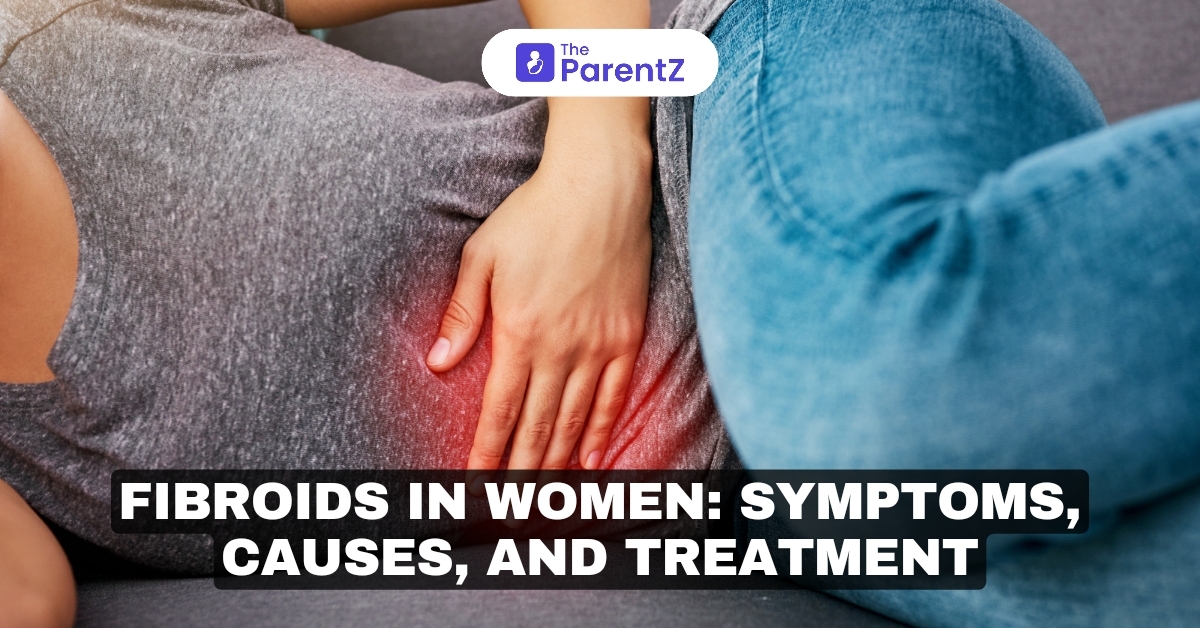Fibroids, or uterine leiomyomas, are characterized by non-cancerous growths in and around the uterus. According to a report by the National Institutes of Health, almost 30 percent of women, especially women who are in their reproductive phase, develop this. These benign tumors vary in size, from tiny seeds to large masses that may enlarge the uterus.
Read this article to learn about fibroids in women in depth, including the symptoms, causes, diagnosis, and treatment.
Types of Fibroids
Fibroids are categorized into four types based on their location in the uterus.
- Intramural fibroids: one of the most common types that grows within the walls of the uterus.
- Subserosal Fibroids: Such fibroids extend beyond the muscular walls and grow into the pelvic cavity and can develop into a heavy mass.
- Submucosal Fibroids: These fibroids may grow into the uterine cavity and can significantly impact menstrual cycles and fertility.
- Pedunculated Fibroids: Such fibroids are attached to the uterus by a thin stalk-like structure and may grow either inside or outside the uterus.
Symptoms of Fibroids
While most women do not notice any noticeable symptoms, the condition might reciprocate some key symptoms depending upon the size and location of the tumor. Some of the common signs of fibrosis in women include
- Heavy menstrual bleeding, which can often lead to anemia and fatigue.
- Pelvic pain and discomfort in the pelvic area or lower abdomen
- Frequent urge to urinate
- Constipation
- Pain during intercourse
- Lower back pain
Causes of Fibroids
While the actual cause behind fibroids is not yet explored, several factors can contribute towards its development.
- Hormones: Production-regulating hormones, such as estrogen and progesterone, can result in the development of fibroids.
- Family history: genetic factors and a family history of fibroids are significant risk factors.
- Age: Women in their reproductive phase, particularly 30–40, are at an increased risk.
- Diet: An imbalanced diet, particularly one high in red meat and low in green veggies and fruits, significantly increases the risk of fibroids in women.
- PCOS: Women suffering from polycystic ovary syndrome are more vulnerable to the development of fibroids. Other conditions that are associated with fibroids include high blood pressure.
Treatment
The treatment varies depending on the severity of the condition, size, and location of the tumor. It also depends on the woman’s age and her reproductive preferences.
- Medications: The healthcare provider might recommend certain birth control pills, IUDs, or GnRH to regular hormones and hence reduce symptoms. Alternatively, non-hormonal treatments such as non-steroidal anti-inflammatory drugs (NSAIDs) can also be recommended to reduce pain and menstrual bleeding.
- Surgical and Minimal Invasive Treatment: In some cases, the doctor may recommend uterine artery embolization or focused ultrasound surgery to help in the shrinking of fibroids and destroying of fibrous tissue, respectively.
If a woman wishes to maintain her fertility, a surgical procedure of removal of fibroids called myomectomy can be considered. In extreme conditions, hysterectomy or complete removal of the uterus is considered important; however, it's not suitable for women who want to have kids.
Takeaway
Fibroids is a common condition that affects women, especially in their reproductive age. It is important to get yourself consistently monitored with regular checkups. If you suspect any such symptoms, it is recommended to seek your doctor immediately before the condition progresses.








Be the first one to comment on this story.